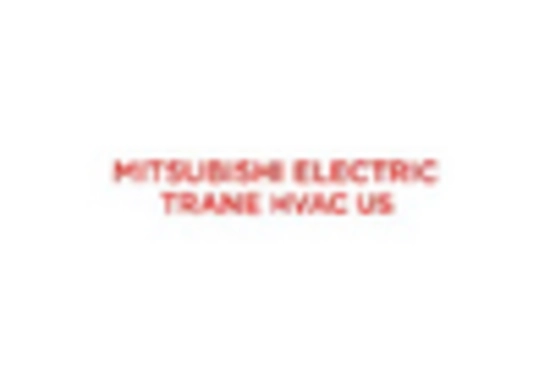Growth in Data Center Infrastructure
The growth in data center infrastructure is a significant factor influencing the Dielectric Fluid Market. As the demand for data storage and processing increases, data centers are expanding rapidly, necessitating efficient cooling solutions. Dielectric fluids are increasingly being utilized in immersion cooling systems, which offer superior thermal management compared to traditional air cooling methods. The data center market is projected to grow at a CAGR of approximately 12% in the coming years, which indicates a rising demand for dielectric fluids. This trend suggests that the Dielectric Fluid Market will likely benefit from the increasing adoption of advanced cooling technologies in data centers, as operators seek to enhance energy efficiency and reduce operational costs.
Expansion of Renewable Energy Sources
The expansion of renewable energy sources, particularly wind and solar power, is significantly influencing the Dielectric Fluid Market. As the world transitions towards sustainable energy solutions, the demand for transformers and other electrical equipment that utilize dielectric fluids is on the rise. For instance, wind turbines require dielectric fluids for insulation and cooling purposes, ensuring efficient operation in various environmental conditions. The renewable energy sector is anticipated to grow at a CAGR of approximately 8% over the next decade, which suggests a corresponding increase in the need for dielectric fluids. This trend indicates that the Dielectric Fluid Market will likely benefit from the growing investments in renewable energy infrastructure, as manufacturers seek to enhance the reliability and efficiency of their systems.
Increasing Demand for Electric Vehicles
The rising demand for electric vehicles (EVs) is a pivotal driver for the Dielectric Fluid Market. As the automotive sector shifts towards electrification, the need for efficient cooling systems in EV batteries becomes paramount. Dielectric fluids are essential in these systems, as they provide thermal management and enhance the performance of battery packs. According to recent estimates, the electric vehicle market is projected to grow at a compound annual growth rate (CAGR) of over 20% in the coming years. This surge in EV adoption is likely to propel the demand for dielectric fluids, as manufacturers seek reliable solutions to ensure optimal battery performance and longevity. Consequently, the Dielectric Fluid Market is expected to witness substantial growth, driven by the increasing integration of dielectric fluids in electric vehicle applications.
Regulatory Support for Environmental Standards
Regulatory support for environmental standards is emerging as a crucial driver for the Dielectric Fluid Market. Governments worldwide are implementing stringent regulations aimed at reducing the environmental impact of industrial processes, including the use of dielectric fluids. These regulations often encourage the adoption of eco-friendly dielectric fluids, such as those derived from renewable resources. The market for environmentally compliant dielectric fluids is expected to expand, with projections indicating a growth rate of around 10% over the next few years. This regulatory landscape is likely to compel manufacturers to innovate and adapt their product offerings, thereby enhancing the overall sustainability of the Dielectric Fluid Market. As companies strive to meet these standards, the demand for compliant dielectric fluids is expected to rise, further driving market growth.
Technological Innovations in Electrical Equipment
Technological innovations in electrical equipment are driving advancements in the Dielectric Fluid Market. The development of high-performance dielectric fluids, which offer superior thermal stability and electrical insulation properties, is becoming increasingly important. Innovations such as bio-based dielectric fluids are gaining traction, as they provide environmentally friendly alternatives to traditional mineral oils. The market for these advanced dielectric fluids is projected to grow, with estimates suggesting a potential increase of 15% in the next five years. This growth is indicative of the industry's shift towards more sustainable and efficient solutions. As manufacturers continue to innovate and improve the performance of electrical equipment, the Dielectric Fluid Market is likely to experience a surge in demand for these cutting-edge products.

















Leave a Comment